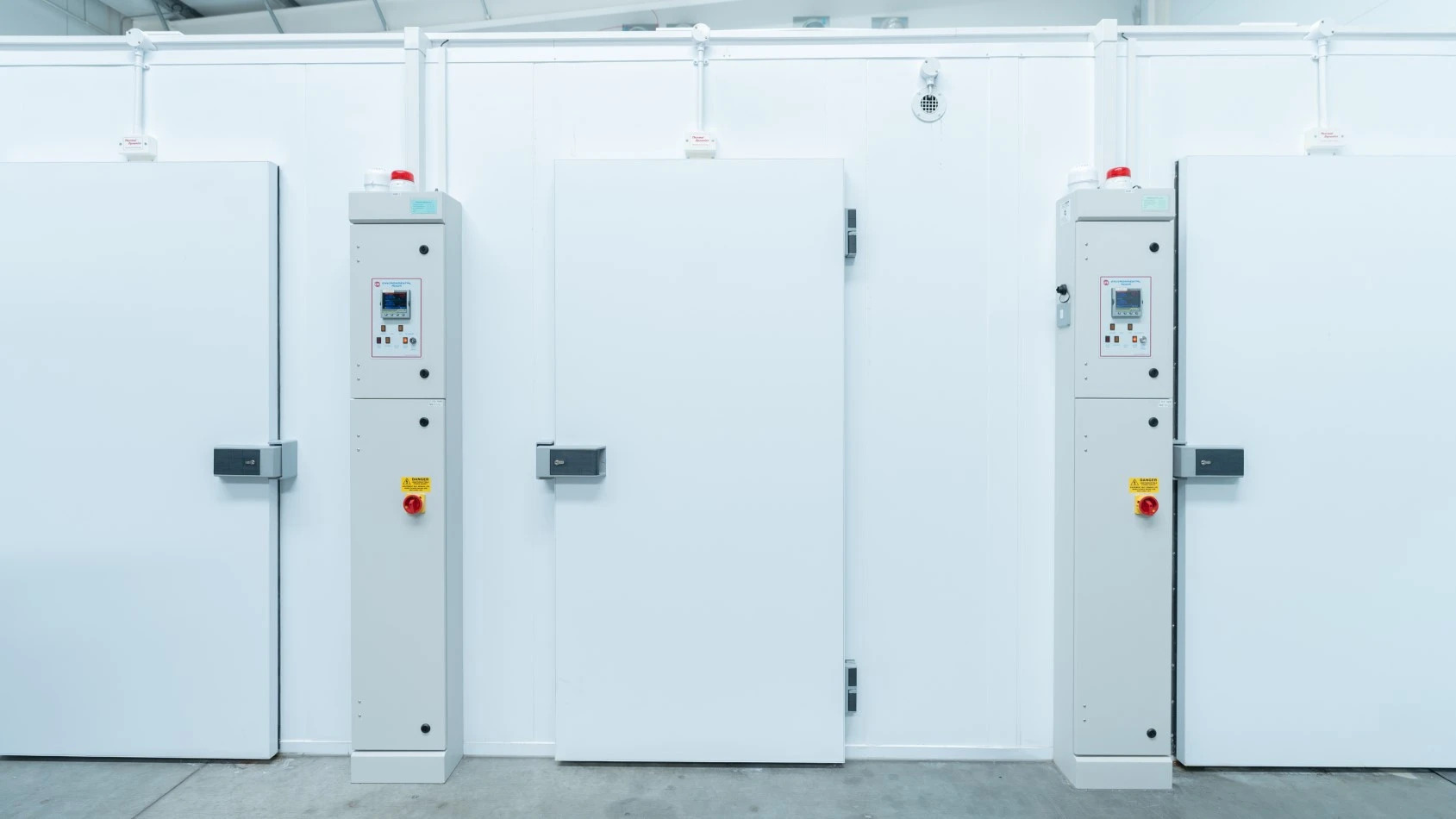~ Stability trends in the pharmaceutical, nicotine, and cannabinoid sectors ~
The Vital Role of Stability Studies in Pharmaceutical Inhalation
Pharmaceuticals

Apr 18, 2024 | Published by Paul Barr
Pharmaceuticals
Inhalation Therapy is a vital treatment for patients globally.
Broughton Consultant, Paul Barr explores the importance of stability studies for pharmaceutical inhalation products and the considerations for pharmaceutical inhalation category- innovators who wish to enter this market.
Inhalation Therapy - a vital treatment
Inhalation therapy is predominantly used in treating respiratory diseases and can significantly influence the quality of life for patients, but it can also be a lifesaving form of medicinal treatment. Inhalation therapy involves the delivery of the Active Pharmaceutical Ingredient (API) responsible for the therapeutic effect directly to the Lungs in the form of an aerosol, mist, or dry powder, generally using a portable handheld inhaler device. The most common types of inhalation devices used are pressurized metered-dose inhalers (pMDIs), dry powder inhalers (DPIs), soft mist inhalers (SMIs), and nebulizers.
Inhalation and category-innovation
Globally, over half a billion people suffer from respiratory diseases, with 328 million people suffering from COPD and a further 262 million people affected by asthma. Considering these figures, using inhalation therapy to provide a high local concentration of a therapeutic drug makes it an appealing option for treating these diseases. However, the principles that make inhalation therapy so effective, such as a large surface area of the lungs and thin air–blood barrier for adsorption, make it equally appealing for systemic therapy of conditions that are not exclusively related to the respiratory system. With this in mind, inhalation therapy can cover a wide spectrum of diseases, likely increasing with future innovation.
Stability Studies are key
The delivery of the dose is a critical quality attribute due to the immediate onsite of the therapeutic action. For example, reliever inhalers are used by patients to treat acute asthma attacks. If these devices do not function as intended over the product's shelf life and the patient does not receive the labelled dose for immediate relief, this may have severe consequences for the patient's health and may even present a risk to life. Considering the importance of inhalation therapy in these cases, the stability of these products must be substantiated with analytical data that evaluates the product's performance over the product's shelf life. These stability studies are mandatory for the regulatory approval and licensing of medicinal products.
Essential Stability Studies for Pharmaceutical Inhalation Products
Regardless of the dosage form of medicinal products, stability studies are required. However, the various dosage forms may present different risks to be considered and evaluated throughout a stability study.
Essential considerations include:
- Delivered Dose Uniformity and Aerodynamic Particle Size
Specifically, the Delivered Dose Uniformity (DDU) and Aerodynamic Particle Size Distribution Tests (APSD) are key tests for inhalation products to evaluate product performance. The DDU is crucial to ensure the patient receives the correct dose consistently throughout the individual inhaler life and between different inhalers.
The DDU directly impacts the drug's efficacy and consequently will affect the therapeutic effect for the patient and, therefore, must comply with strict pharmacopeial limits. The particle size of the drug measured through APSD is equally important as this will influence the region of the lung to which the drug is delivered, known as lung deposition. Subsequently, the lung deposition will affect the bioavailability, which in turn will impact the therapeutic effect.
- Moisture Ingress and Microbial Growth
In evaluating inhalation medicinal products, it is essential to consider the stability-related influences that may impact these critical quality attributes.
One crucial aspect that must be considered during stability studies is the potential for moisture ingress over the shelf life, which may have numerous consequences.
For example, for solution-based pMDIs where the drug is dissolved in an organic component such as ethanol, moisture ingress may affect the solubility of the drug in the solvent and cause partitioning and precipitation of the API; this may result in a drop in concentration and, subsequently, a reduced dose. Additionally, water uptake in DPIs may change the powder's physical characteristics, impacting the dose delivered. Water uptake can also influence the size of the particle produced by the inhaler and result in a change in lung deposition and bioavailability.
In addition to the DDU and APSD, moisture uptake can increase the risk of microbiological growth. Microbial growth is a serious consideration for stability studies of all forms of drug delivery; however, due to the route of delivery via inhalation, microbial growth is a considerable risk and is tightly controlled via pharmacopeial limits specifically for inhalation use.
Furthermore, moisture ingress may impact potential leachables. For DPIs where the drug product is packaged in a blister, ingress of moisture can increase the potential leachable migration from the blister packaging into the drug product. Additionally, for liquid formulations such as pMDIs, water ingress will likely impact the leachables profile. Leachables may be compounds of toxicological concern, or they may cause reactions within the drug formulation, potentially creating new chemical compounds that may be of toxicological concern or react with the API, causing a decrease in the concentration.
Naturally, oxygen will also be present when moisture ingress occurs in these products. The combination of higher humidity and oxygen can promote degradation of the product formulation. The effects of this can be twofold. Firstly, degradation of the API may result in decreased efficacy of the product as the label claim and DDU will change. Secondly, degradation can cause increased levels of breakdown products, which may be a toxicological concern.
- Storage Orientation
Another consideration for stability studies of inhalation products is the storage orientation. Storage orientation may be a particular concern for pMDIs. Due to the mode of operation of these devices, the aerosol delivery and product performance may be influenced directly by the orientation over the shelf life. In addition, the leachable profile may also differ depending on the orientation, as the liquid formulation may be in contact with different materials and exposed to a different surface area.
As well as chemical processes, the long-term stability of the physical properties of the device is another important consideration. For inhalation therapy, the device may not generate the correct dose and aerosol properties if it is not functioning correctly due to degradation or changes to the device's material or quality. The performance of critical quality tests such as DDU and APSD can evaluate any changes in the device.
Shelf-life stability is a significant part of the quality assessment for a licensed medicine. This blog provides a snapshot of some of the more general considerations and risks for inhaled medicinal products over their shelf life. However, the potential risks to the stability of inhalation products must be considered on a case-to-case basis as they will be bespoke for each inhalation product. Some of these risks can be mitigated with careful selection of appropriate packaging. The effectiveness of the primary packaging and container closure system in providing a suitable barrier for the drug product against the environment and limiting oxygen and water vapor transmission is critical for drug product stability.
Quality Control
These products are vital for patients' continuous treatment and well-being; however, in some cases, such as treating acute asthma attacks, these can be lifesaving products. With this in mind, patients' lives can depend on the functionality of these products through their shelf life; therefore, crucial quality parameters such as the dose and particle size must be maintained to ensure the efficacy and bioavailability of the products are not changed over time.
Quality can be built into these products with the right type of packaging and container closure system and consistently evaluated over time with robustly designed stability studies to assess the critical quality parameters of the products. These stability studies should be a pillar within the quality foundation of these products to ensure the quality, efficacy, and safety of products, allowing millions of people worldwide to breathe easier and enjoy a better quality of life.
Building a partnership with Broughton
In conclusion, shelf-life claims on pharmaceutical inhalation products must be substantiated through stability studies.
Selecting the right partner to manage such studies is key. Broughton isn’t just another testing facility we are pioneers in pharmaceutical inhalation, respiratory health, and respiratory drug development.
With over 15 years of unparalleled expertise, we’re a trusted partner for category innovators navigating respiratory development.
To find out how Broughton can support bringing your pharmaceutical inhalation products to market, contact us here.


